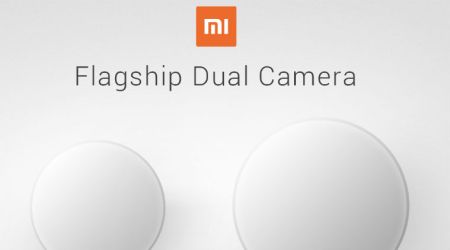 Xiaomi Mi A1, with the A1 signifying Android One, will be the return of Google’s much-touted pure Android experience for basic smartphones. (Source: Nandagopal Rajan)
Xiaomi Mi A1, with the A1 signifying Android One, will be the return of Google’s much-touted pure Android experience for basic smartphones. (Source: Nandagopal Rajan)
When the Xiaomi Mi A1 launches in India today, it would mark a significant pivot in Google strategy for connecting the “next billion”. It would be an acceptance of the fact that a pure Android experience, isn’t exactly an entry-level experience, at least in the developing markets.
The Xiaomi Mi A1, with the A1 signifying Android One, will be the return of Google’s much-touted pure Android experience for basic smartphones. But the Xiaomi Mi A1 is anything but a basic smartphone, with a dual camera at the back.
When it was announced by Sundar Pichai, then the head of Android and Chrome, in New Delhi exactly three years back, Android One was expected to offer a better and standardised software experience to sub-$100 phones. This was the segment where manufacturers were adding skins and themes ranging from the loud to the ridiculous. There was even a hardware reference board to ensure that the manufacturers standardised the product they were offering under the Android One name. However, despite the marketing dollars Google poured into the project, Android One ended up being a mere whimper, especially when you consider the kind of volumes the Indian market is used to.
Read: Google’s Android One will woo first-time smartphone users
Come September 2017, and Android One has been revived, but not as a basic smartphone OS, but as a mid-range operating system where customers might actually find value in the pure Android experience. And this is not a gamble but is actually a tried and tested formula.
Ask Motorola, which has found immense success in India with the Moto G range, where the plain vanilla experience has clearly emerged as a USP along with the value for money packaging. Also, Nokia which has relaunched in recent months with a range of budget smartphones is also pushing a pure Android experience, though with some tweaks.
In his blog on the new Android One phone, Jamie Rosenberg, VP, Business & Operations, Android & Google Play, says the attempt was, again, to “deliver a software experience designed by Google”. It is just that the partners and the target audiences seem to have changed this time around.
Actually, looking at how the sub-$100 market has evolved, it seems staying updated on the OS version, avoiding vulnerabilities, clean design and a pure Android experience might not be really at the top of the mind for that crowd. It certainly makes more sense to offer this for a slightly more discerning audience. Now, to see if this is another flash in the pan or a sustained effort to make Android One the mid-range standard.

